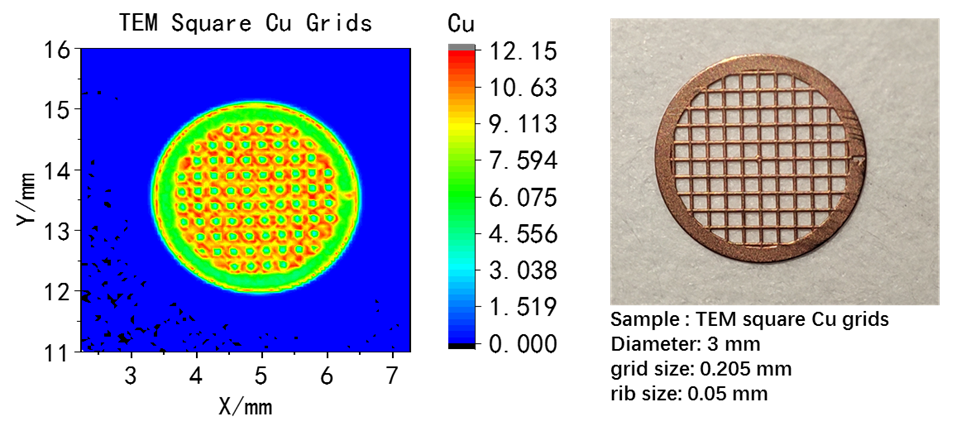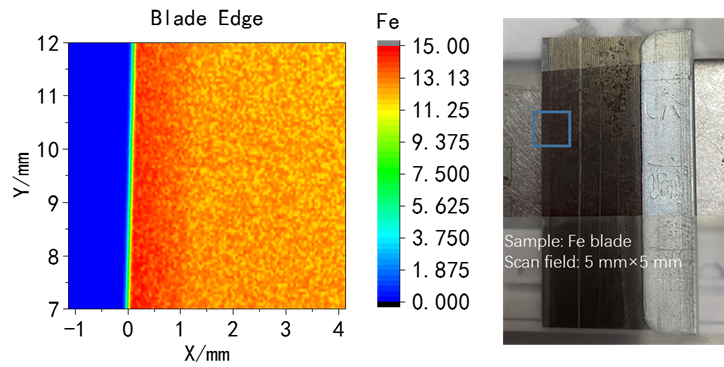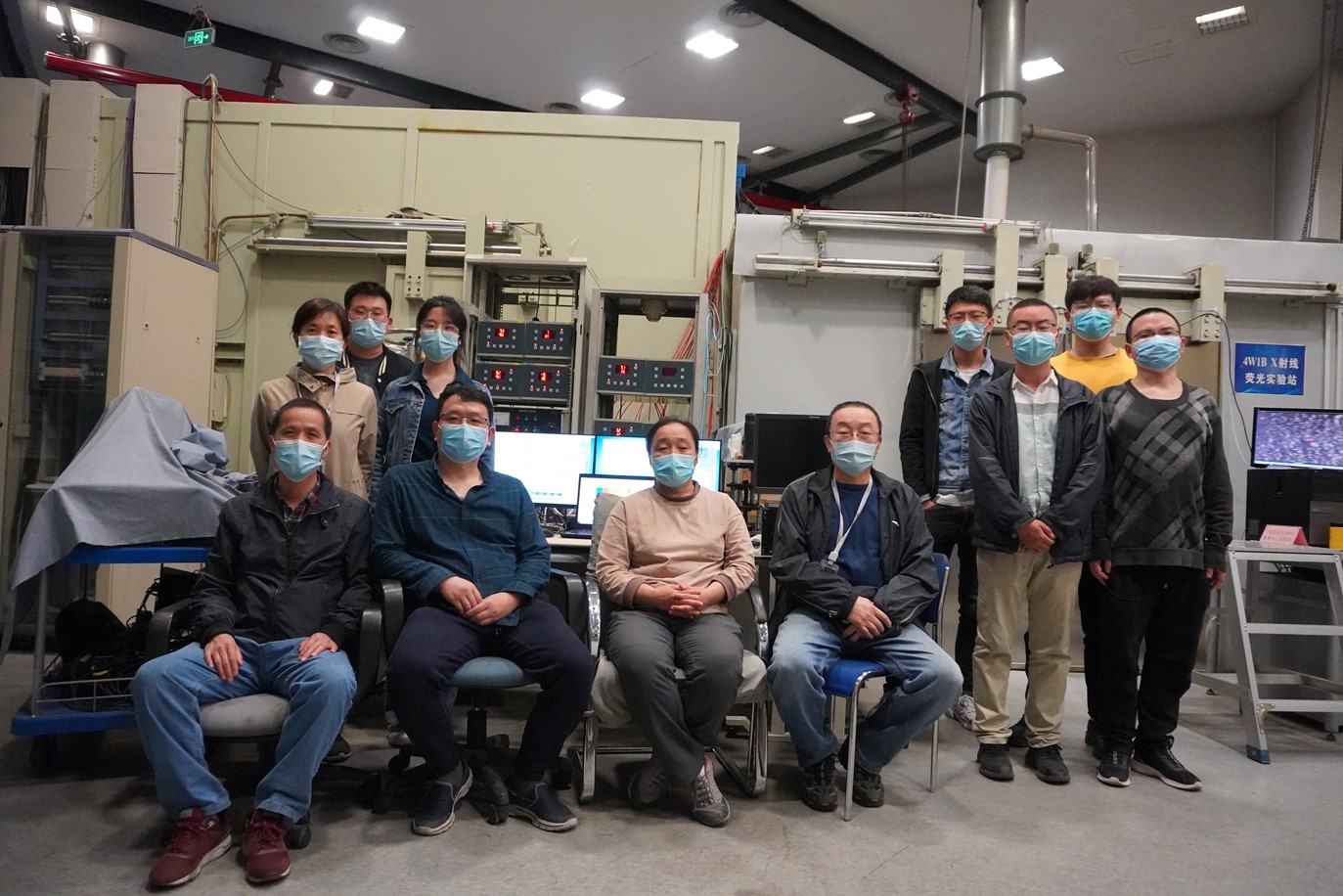Highlights/News
Significant Improvement in Fly-scan Experimental Approach Developed for HEPS Beamline Endstations
2022-05-16
A fly-scan experiment on standard samples was successfully conducted by the High Energy Photon Source (HEPS) Beam Instrumentation and Control Division's beamline control system in cooperation with the Beijing Synchrotron Radiation Facility (BSRF) 4W1B Station on April 15. Based on more than a year's technical development and iterative optimization, the experimental results show that the newly developed fly-scan experimental system helped reduce the scan rate/speed at the 4W1B endstation from hours to minutes per sample. In addition, experimental efficiency was improved more than an order of magnitude. The data collection process and the result of the fly-scan experiment have been approved by the 4W1B endstation. The fly-scan experimental system will be opened to users soon.
Point-by-point area scanning technology has become a very popular technology for synchrotron radiation facilities along with an ultra-high spatial resolution for the beam, which allows users to resolve the elemental composition, content, and structure, etc. of samples. The fly-scan experimental system triggers the multi-axis motion sample stage and data acquisition of the detector simultaneously, so as to coordinate data collection under conditions of accurate time and position. The fly-scan system can thus improve the efficiency of area scan mapping and minimize the influence of factors such as instability and irradiation damage. As a result, a much larger sample (i.e., centimeter-size, which is two orders of magnitude greater than the spatial resolution size) can be analyzed within a limited beam time. In addition, 3D structural analysis can be conducted.
Commissioning the whole fly-scan process, including optimization, data acquisition and storage, and post-processing, was carried out by the HEPS control system for the HEPS beamline at the same time as it conducted fly-scan 2D fluorescence mapping experiments using TEM square Cu grids and Fe blade 2D mapping as shown in Figs. 1 and 2, respectively. The data reliability, system stability and convenience of the fly-scan experiment has been tested and verified. Rich experience has been accumulated for future applications of the fly-scan experimental approach in HEPS beamlines. HEPS will be one of the brightest fourth-generation synchrotron radiation facilities in the world, providing beams of smaller size with greater spatial resolution. With such a fly-scan approach, HEPS will provide users with more efficient measurement.
This technical development was mainly accomplished by team leader Dr. Zhou Aiyu, who is deputy head of the HEPS beamline control system.
Point-by-point area scanning technology has become a very popular technology for synchrotron radiation facilities along with an ultra-high spatial resolution for the beam, which allows users to resolve the elemental composition, content, and structure, etc. of samples. The fly-scan experimental system triggers the multi-axis motion sample stage and data acquisition of the detector simultaneously, so as to coordinate data collection under conditions of accurate time and position. The fly-scan system can thus improve the efficiency of area scan mapping and minimize the influence of factors such as instability and irradiation damage. As a result, a much larger sample (i.e., centimeter-size, which is two orders of magnitude greater than the spatial resolution size) can be analyzed within a limited beam time. In addition, 3D structural analysis can be conducted.
Commissioning the whole fly-scan process, including optimization, data acquisition and storage, and post-processing, was carried out by the HEPS control system for the HEPS beamline at the same time as it conducted fly-scan 2D fluorescence mapping experiments using TEM square Cu grids and Fe blade 2D mapping as shown in Figs. 1 and 2, respectively. The data reliability, system stability and convenience of the fly-scan experiment has been tested and verified. Rich experience has been accumulated for future applications of the fly-scan experimental approach in HEPS beamlines. HEPS will be one of the brightest fourth-generation synchrotron radiation facilities in the world, providing beams of smaller size with greater spatial resolution. With such a fly-scan approach, HEPS will provide users with more efficient measurement.
This technical development was mainly accomplished by team leader Dr. Zhou Aiyu, who is deputy head of the HEPS beamline control system.

Fig. 1. TEM Cu grids 2D mapping image collected in fly-scan (Image by IHEP)

Fig. 2 Fe blade 2D mapping image collected during fly-scan experiment (Image by IHEP)

Fig.3 Staff of HEPS beamline control system and BSRF 4W1B beamline (Image by IHEP)
Contact Information
Mr. GUO Lijun
ljguo@ihep.ac.cn
Related News
Call for Proposals for HEPS Phase II Beamlines
05-23,22
The High Energy Photon Source (HEPS), a greenfield high-energy, ultralow-emittance synchrotron fa...
HEPS Feasibility Study Report Approved
01-11,19
China's High Energy Photon Source (HEPS) project moved one step closer to reality with approval o...

